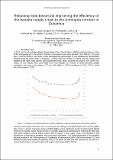| dc.description.abstract | In 2011, the Food and Agricultural Organization of the United Nations (FAO) estimated that one-third of the food produced in the world for human consumption was lost or wasted (FAO, 2021d). Ten years later, a World Wildlife Fund (WWF) study calculated the percentage of food destined for consumption wasted along the entire chain. It reached 1.2 billion tons of food lost on farms and 931 million tons wasted at the retail, food service, and household levels, which accounts for around 40% (WWF-UK, 2021). All this wasted food could feed more than double the number of undernourished people worldwide, estimated to be between 720 and 811 million in 2020 (see figure 1) (FAO, 2021e; World Food Programme, 2020). | en_US |
